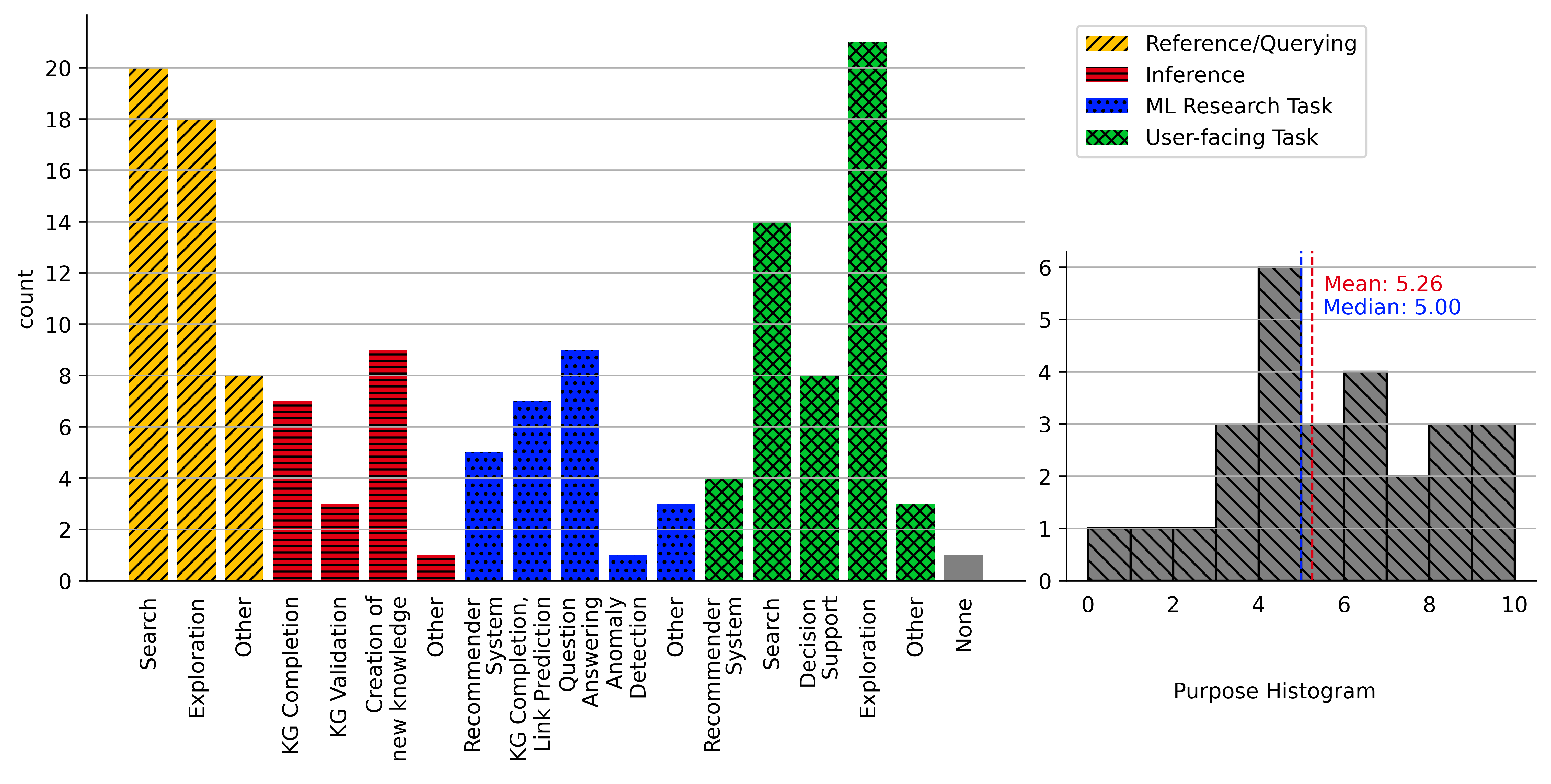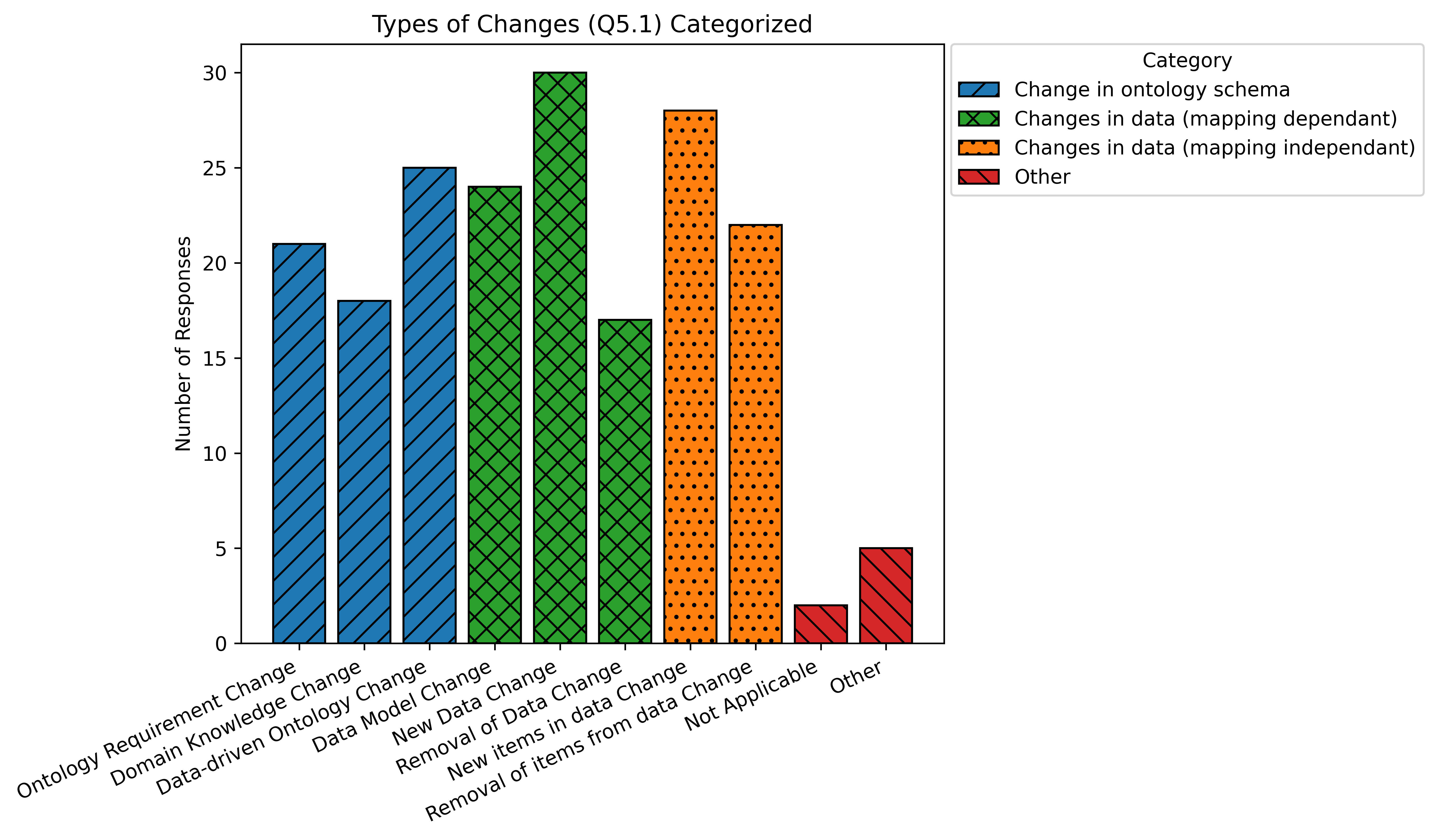LOT4KG Survey
Survey Results
The LOT4KG methodology has been validated through a survey. You can explore the survey's raw anonymised data, scripts, and aditional findings:
The following table displays the validation results, it has been ordered by the number of checkmarks per row, from highest to lowest. The top row shows the percentage of coverage for the particular sub-activity in the form of a pie chart. Each of the rows is a response for the survey question (R), for the anonymised survey responses AR was used. The table shows the coverage of each of the LOT4KG subactivities with a checkmark. The survey also collected the list of tools and resources for each sub-activity.
| KG | Requirements | Implementation | Publication | Maintenance | Change concept. | Change evaluation | Change encoding | Onto. evaluation | Data preparation | Mapping dev. | Data transf. | Constraints dev. | Data validation | Documentation | Publication | Bug Detection | Detect delta | Assess impact | Mapping update | Data transf. | Constraints update | Data validation | |
|---|---|---|---|---|---|---|---|---|---|---|---|---|---|---|---|---|---|---|---|---|---|---|---|
| Activity Coverage |
93.75%
|
93.75%
|
65.63%
|
71.88%
|
77.42%
|
54.84%
|
61.29%
|
48.39%
|
87.10%
|
93.55%
|
74.19%
|
58.06%
|
83.87%
|
77.42%
|
83.87%
|
64.52%
|
16.13%
|
35.48%
|
83.87%
|
67.74%
|
45.16%
|
54.84%
|
|
| R6 | |||||||||||||||||||||||
| R16 | European Union Agency for Railways (ERA) | ||||||||||||||||||||||
| R9 | Building Information aGGregation (BIGG)) | ||||||||||||||||||||||
| R91 | Dimensions | ||||||||||||||||||||||
| AR97 | |||||||||||||||||||||||
| R8 | EDIFACT Ontology | ||||||||||||||||||||||
| R93 | |||||||||||||||||||||||
| R75 | CIDOC-CRM | ||||||||||||||||||||||
| R3 | OfficeGraph | ||||||||||||||||||||||
| R77 | Odeorupa | ||||||||||||||||||||||
| R73 | |||||||||||||||||||||||
| R11 | Mlsea | ||||||||||||||||||||||
| R60 | Simulation Ontology | ||||||||||||||||||||||
| AR38 | |||||||||||||||||||||||
| AR84 | |||||||||||||||||||||||
| R61 | Knowledge Hub Ontology | ||||||||||||||||||||||
| R31 | Marine Regions | ||||||||||||||||||||||
| R5 | Scihyp | ||||||||||||||||||||||
| R21 | Cybermapping | ||||||||||||||||||||||
| R17 | |||||||||||||||||||||||
| R15 | Ehri Portal | ||||||||||||||||||||||
| R12 | |||||||||||||||||||||||
| AR22 | |||||||||||||||||||||||
| R14 | Polifonia meetups | ||||||||||||||||||||||
| R35 | Issa agritrop dataset | ||||||||||||||||||||||
| R20 | SWeMLS-KG | ||||||||||||||||||||||
| R27 | |||||||||||||||||||||||
| R18 | |||||||||||||||||||||||
| R95 | Katy-kg | ||||||||||||||||||||||
| R10 | Deliberation knowledge graph | ||||||||||||||||||||||
| R13 |
Types of Changes in Ontology & Data
The survey also collected information about the main purposes for which the Knowledge Graphs (KGs) were developed. The following figure summarizes the distribution of KG purposes as reported by the survey participants. In most cases, a KG reports to have more than one purpose, sometimes in more than one category. On average, the KGs in this survey have 5.07 different means (median 5). There are four different categories "reference/querying", "inference", "machine learning research tasks", "user-facing tasks", and "other". Within the "reference/querying" category, additional information was added sich as geographical aggregation, analytics, ontology metrics, or semantic interoperability.

Knowledge Graph Purpose
From the answers collected in the survey information was gathered on the types of changes that have been identified in the ontology and KG Lifecycle. As seen in the figure the category of changes that has been identified in most projects is the addition of new data, both for mapping dependant changes and mapping independant changes. The changes less contemplated in projects are those related to changes in the fomain knowledge and the removal of data (mapping dependant).

How to cite
If you are using the content of LOT4KG methodology you should cite: Pernisch R., Chaves-Fraga D., Stork L., Conde-Herreros D., Poveda-Villalón, M., LOT4KG: A Joint Methodology for the Ontology and Knowledge Graph Lifecycle. Under Review (ISWC2025).